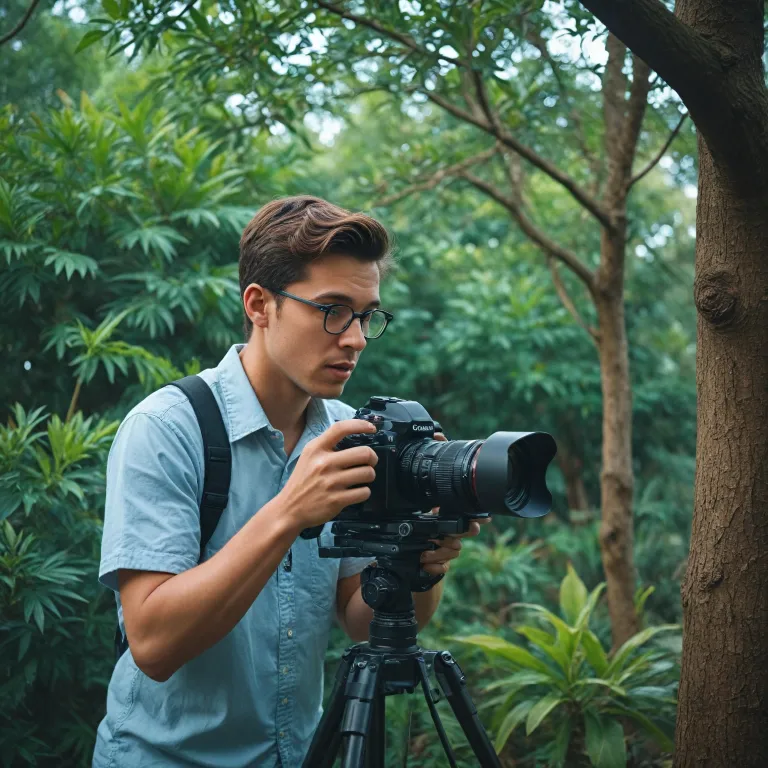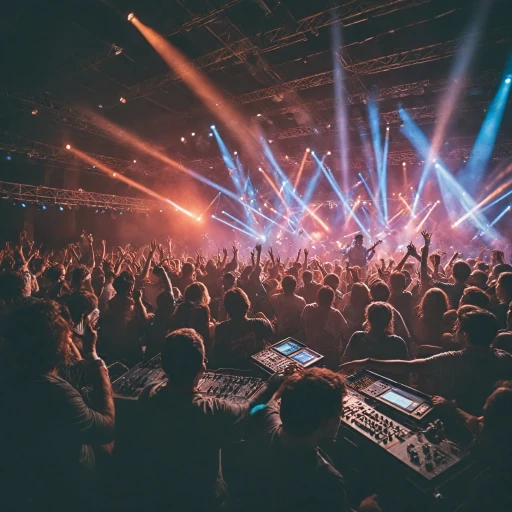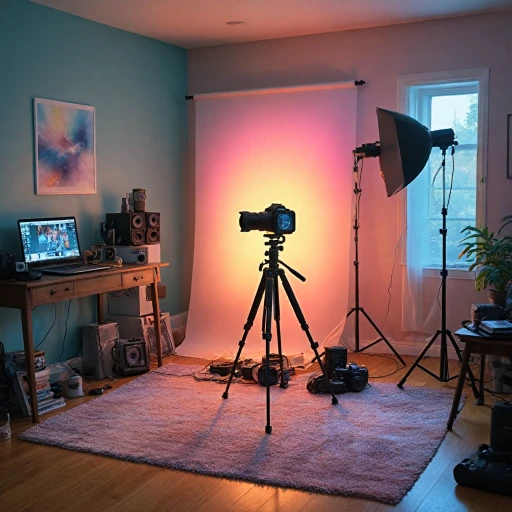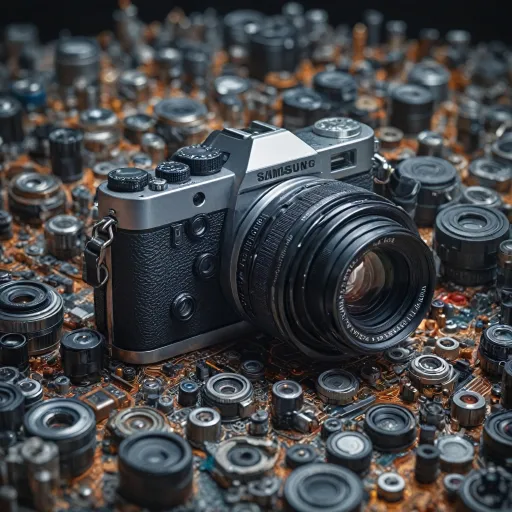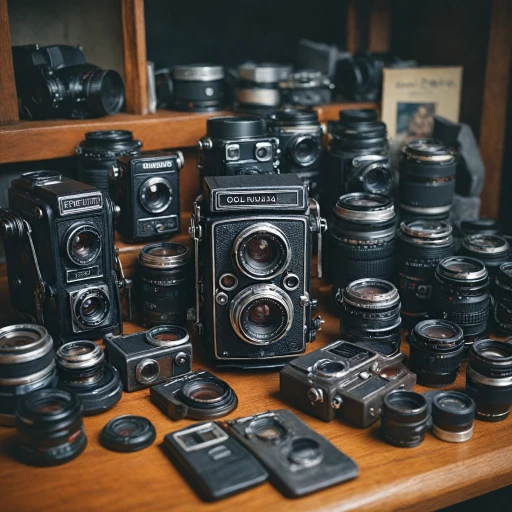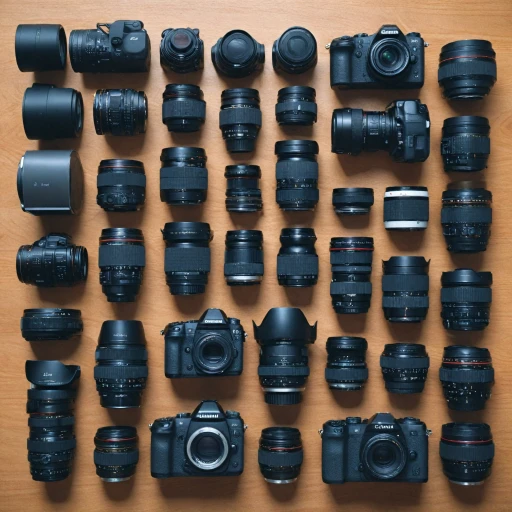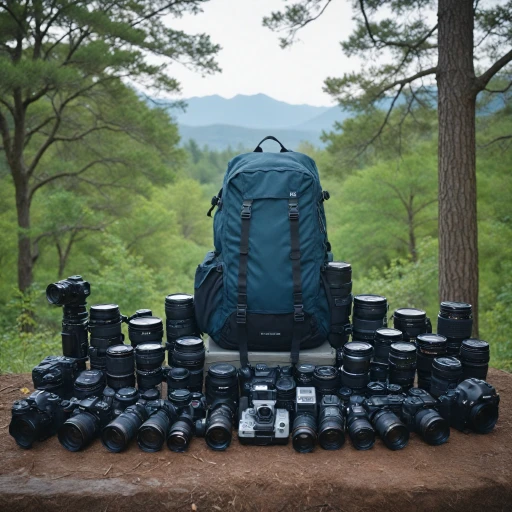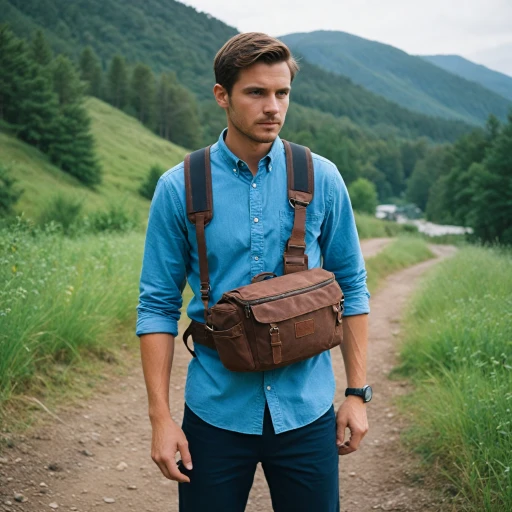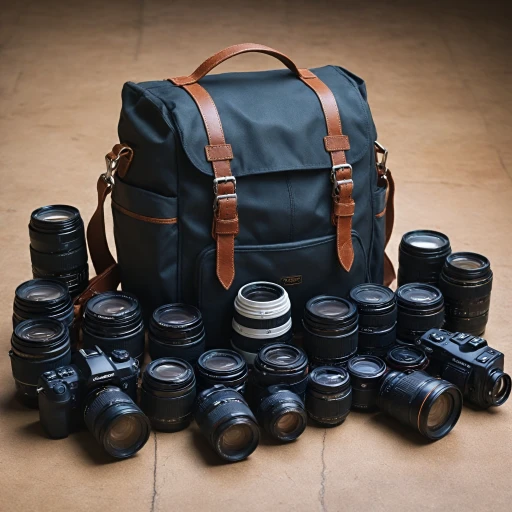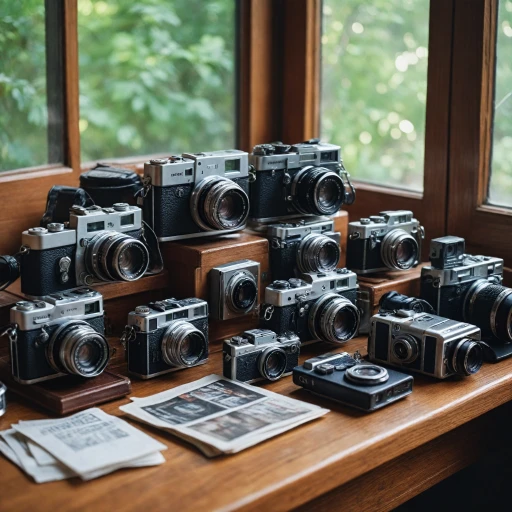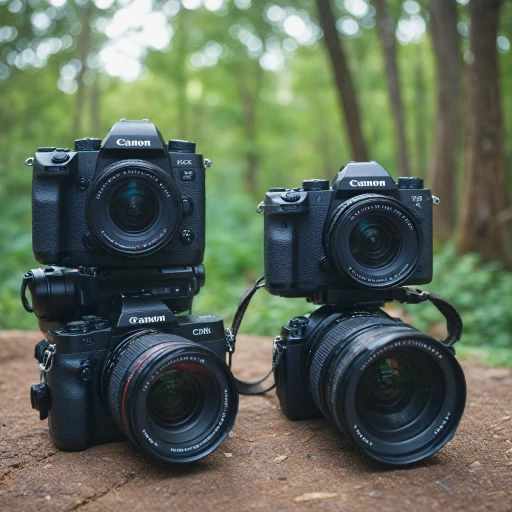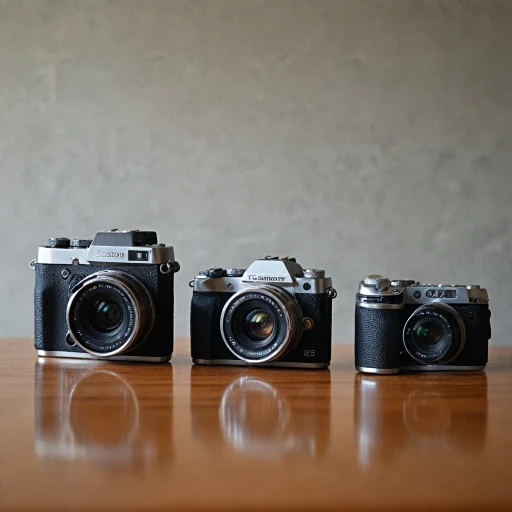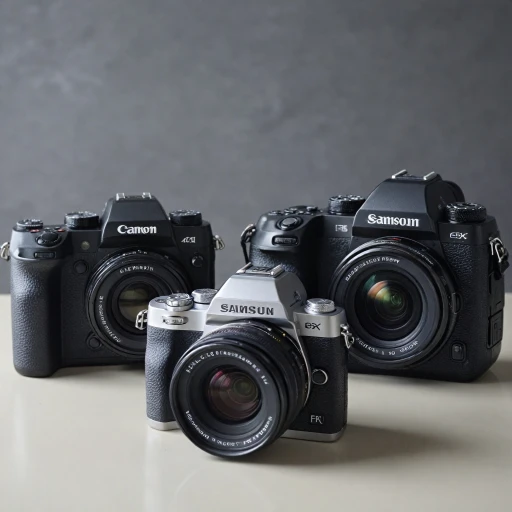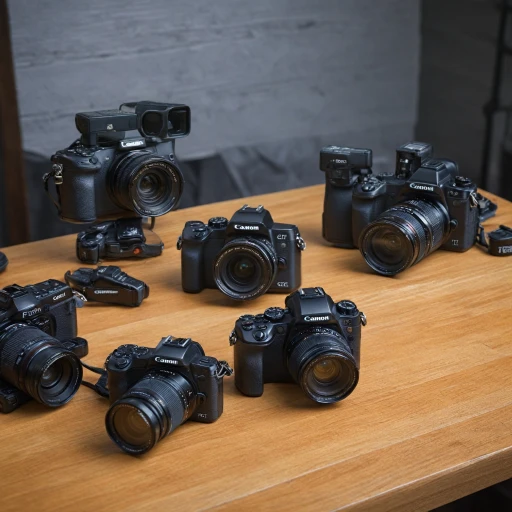
Understanding Your Filmmaking Needs
Defining Your Purpose in Filmmaking
As an aspiring filmmaker on a budget, the first and most crucial step in finding the perfect camera is understanding your specific needs. Determining what you want to achieve—be it high-quality visuals, engaging storytelling, or live streaming capabilities—will significantly influence your choice of equipment. Your goals will guide your selection of features, whether you’re prioritizing image stabilization, sensor size, or low-light performance.
Camera Types: What to Consider
Today, the market offers a variety of camera types, each with its own strengths and weaknesses. Mirrorless cameras, like those from Fujifilm and Sony, generally offer compact body image designs and great choice options for versatile shooting. Meanwhile, cinema cameras are often bulkier but provide superior video formats, suited for professional scene captures. When deciding, consider factors such as the best camera that aligns with your end goals.
Evaluating Key Features
Once you've identified the type of camera you need, turn your attention to specific features essential for filmmaking:
- Image Quality and Sensor Size: A larger sensor can offer better image quality and low light performance, making cameras like the Panasonic Lumix with its full frame capabilities a worthy consideration.
- Stabilization and Lens: Image stabilization is critical for shooting smooth videos. Ensure your camera, or the lens you choose, supports this feature for optimal results.
- Video Capabilities: Evaluate whether you need 4K shooting, HDMI output, or a particular frame rate for your projects. The right video camera or mirrorless camera can offer full shooting capabilities to meet professional standards.
By clearly understanding your filmmaking goals and examining key specifications, you can make informed choices. Whether you decide to invest in a Sony best camera or a pocket cinema model, having clarity on your needs and the available options is crucial for maximizing your camera's potential within a budget. This approach not only enhances your filmmaking but ensures that your chosen tool can adapt as your skills and projects grow in complexity.
Top Budget Cameras for Filmmaking
Popular Budget-Friendly Options
For aspiring filmmakers on a tight budget, there are numerous cameras available that deliver exceptional image quality without breaking the bank. Here are some standout models:- Sony Alpha a6000: Known as the sony best camera in terms of affordability and performance, the Alpha a6000 is a mirrorless camera that offers quick autofocus and a 24.3 MP sensor. Whether you are shooting video or stills, this camera handles low light well and provides high-quality images.
- Panasonic Lumix G7: This micro thirds mirrorless camera comes with 4K video capability, great choice for those diving into filmmaking. Combined with its interchangeable lens options and efficient image stabilization, it allows for creative shooting on a budget.
- Fujifilm X-T200: With its stylish design and user-friendly interface, this mirrorless model is great for beginners. It sports a 24.2 MP sensor, film simulation modes, and the capability for full HD live streaming.
Balancing Features and Price
When searching for the best budget cinema camera, it's essential to focus on features that will impact your filmmaking the most while keeping in line with your financial constraints. Consider the following factors:- Sensor Size: The sensor size affects the depth of field and overall image quality. While full frame sensors are superior, micro thirds can offer considerable quality at a fraction of the price.
- Image Stabilization: In-camera stabilization can make a significant difference, especially in hand-held shooting. Panasonic's and Sony's cameras both have reputable stabilization systems.
- Video Formats: Look for cameras that support a wide range of video formats and offer full HD or 4K recording. This ensures versatility and high-quality video output.
Comparing Camera Specifications
Analyzing Key Features for Budget Cameras
When comparing cameras for filmmaking on a budget, it’s essential to focus on a few critical specifications that can significantly impact your projects. Filmmaking doesn’t solely depend on the camera you hold, but on the right combination of features tailored to what you need.- Sensor Size: The sensor size can influence image quality and low-light performance. While full frame sensors offer excellent image quality and low-light capabilities, they can be pricier. Many budget-friendly options come with APS-C or micro four-thirds sensors, which still provide substantial quality for filmmaking. For those leaning towards mirrorless cameras, sensor considerations remain crucial.
- Image Stabilization: When shooting video, especially handheld, stabilization ensures smooth shots. Cameras with built-in image stabilization, such as the Panasonic Lumix series, can be beneficial. Enabling stabilization becomes crucial for filmmakers working within financial constraints, preventing additional expenses on external gear.
- Video Formats and Resolution: Full HD is standard, but 4K video recording is becoming increasingly accessible in budget cameras, offering future-proofing and better flexibility during editing. Consider what video formats a camera supports since it can affect post-production workflows. Exploring which video camera provides these features within your budget is vital.
- Autofocus System: A fast and reliable autofocus system becomes critical during live shots. Often, mirrorless cameras provide superior autofocus performance, a useful feature in dynamic filming environments. Sony is often noted as one of the best for its autofocus capabilities in its budget range.
- Body and Build Quality: Although staying on budget, it's important to consider the build of the camera. Durable bodies can withstand various shooting conditions, extending the lifespan of your investment. A pocket cinema camera might capitalize on portability without compromising much on build quality.
- Low-Light Performance: Shooting in various lighting conditions is a common challenge. Therefore, looking for a camera with good low-light capabilities is worthwhile. Some of the best options handle low-light filming by maintaining high image quality.
- Live Streaming Capabilities: With the rise of content platforms, the ability to live stream can be both a distinct advantage and cost-saving factor, allowing creators to expand their audience reach directly from their cameras.
Essential Accessories for Budget Filmmakers
Must-Have Additions for Your Filmmaking Kit
Equipping yourself with essential accessories can make a significant difference in the quality and efficiency of your film projects. Here are some add-ons that can help you get the most out of your budget camera:- Tripod: A stable tripod is crucial for smooth video and still shots. When shooting, a tripod ensures that your camera remains steady, reducing unwanted shakes and producing high-quality footage.
- External Microphone: Capturing clear audio is just as important as capturing crisp images. An external microphone can greatly enhance the sound quality of your video, offering a more professional touch.
- Lenses: Different lenses can open up new perspectives and allow more creative freedom. For mirrorless cameras like the Sony and Fujifilm models, investing in lenses with wide apertures can improve performance in low-light conditions.
- Gimbal Stabilizer: For those moments when you need to capture dynamic shots, a gimbal stabilizer provides the necessary image stabilization for fluid motion, crucial for cinema-like quality.
- Lighting Equipment: Adequate lighting is essential for enhancing image quality and setting the mood of your film. Consider portable LED lights that offer flexibility in various shooting scenarios.
- ND Filters: Use these filters to control the exposure in bright conditions, allowing you to maintain the cinematic look without compromising your video quality.
Tips for Maximizing Your Camera's Potential
Mastering Your Camera's Functions
As an aspiring filmmaker on a budget, understanding the core functions of your camera can significantly enhance your shooting experience. Whether you opt for a Panasonic Lumix or one of the budget Sony models, knowing how to maneuver through the camera's settings is essential. Start by familiarizing yourself with the sensor size and how it influences image quality. A full frame sensor often provides better low-light performance, but micro four thirds can offer significant benefits, including portability and cost-effectiveness.
Optimizing Image and Video Quality
Digging into your camera’s capabilities can lead to higher quality video output. Explore settings like ISO, aperture, and shutter speed to find the best setup for your shooting environment. Utilizing the right combination of these settings allows you to shoot crisp video in various lighting conditions. Mirrorless cameras often provide superior image stabilization, resulting in smoother footage, especially if you're shooting handheld. Consider cameras with built-in stabilization to ensure high-quality video stability.
Utilizing Lenses to Your Advantage
No matter your choice of a cinema camera or a pocket cinema model, the lens can make a substantial difference. Choose lenses that suit your specific filming needs. Wide-angle lenses can be a great choice for capturing expansive scenes, while prime lenses often provide sharper, more vibrant images. Remember that the lens quality is as crucial as the camera itself for achieving that cinematic look.
Exploring Video Formats and Resolution
Your work’s final presentation can be considerably impacted by choosing the right video formats and resolution settings. Most budget cameras offer various recording formats, including 4K, which provides notably sharper images compared to standard HD. Experiment with different resolutions and formats, such as the common 24p for a cinematic feel, and decide what works best for your project.
Enhancing Your Skills through Practice
Once you've optimized your camera settings, practice is key to mastering your craft. Regular shooting allows for the development of a personal style and a better grasp of what works best with your camera’s capabilities. Engage in projects that challenge your skills and encourage live streaming sessions to simulate real-world filming scenarios.
Real-World Filmmaking on a Budget
Shooting on a Tight Budget Without Compromising Quality
For aspiring filmmakers, budget constraints can often limit their equipment choices, but that doesn't mean you can't achieve impressive results. Planning every aspect of the shoot meticulously is crucial in producing high-quality cinema with budget cameras like those from Panasonic, Sony, or Fujifilm. While full frame mirrorless cameras may seem out of reach, opting for a solid micro thirds camera with good image stabilization can still provide stellar results. For instance, a Panasonic Lumix with a high-quality sensor size could be a great choice for those concerned with low light and body image quality.Optimizing Your Equipment for Cinema-Grade Productions
- Rig up Smartly: Even a budget video camera can benefit from some DIY stabilization solutions, like handheld rigs or even simple tripods to avoid shaky footage.
- Maximize Sound Quality: Although often overlooked, a good microphone can drastically improve the video quality. Consider investing in a decent external mic as part of your essential gear.
- Master Your Camera's Settings: Understanding your camera's settings, such as white balance and ISO, ensures better control over the final image output.
